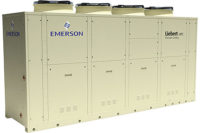This change is a continuation of the efficiency improvements that were implemented in 2010 by further improving the efficiency requirements, according to Dick Lord, a member of the committee who developed the proposal through a working team of the Air-Conditioning, Heating, and Refrigeration Institute (AHRI) chiller section.
In 2010, a Path B was added to the standard for part load intensive water-cooled chillers. This proposed addendum would see Path B expand by adding requirements to include air-cooled chillers. In addition, the efficiency requirements for water-cooled positive displacement and centrifugal chillers could come together while considering the available technology, and to chillers to be applied at other application conditions where one technology might be more prudent than another. If approved, these changes would go into effect Jan. 1, 2015.
The addendum’s proposed efficiency requirements would push annual energy savings to 23.1 percent against the 2004 standard and 8.3 percent against the 2010 standard. Committee member Lord expects the average payback to be about 6.3 years.
Improvements also were made to requirements to clarify the use of chillers, as AHRI recently updated its AHRI 550/590 rating standard that is used to rate chillers and its certification program. AHRI has developed a hard metric standard with different rating conditions than the inch-pound ratings. The new release will be known as AHRI 551/591.
The change also was reflected in the International System of Units rating, along with a revision to the AHRI rating reference to include the new standard.
The committee decided to exclude chillers when the leaving condensing temperatures are greater than 115°F from the new requirements. The clarification is because high-lift, heat-reclaim chiller applications often use different compressors and occasionally different refrigerants. As heat-reclaim chillers increase system efficiency, the effect on overall system efficiency cannot be assessed at standard cooling design conditions, Lord said.
AHRI is coming up with rating requirements, test procedures, and certification for heat-reclaim chillers along with heat-pump chillers. The addendum is available for public review through Jan. 14, 2013. For more information visit www.ashrae.org/publicreviews.
Publication date: 12/24/2012



